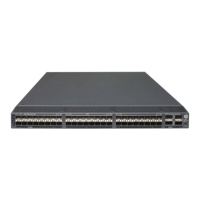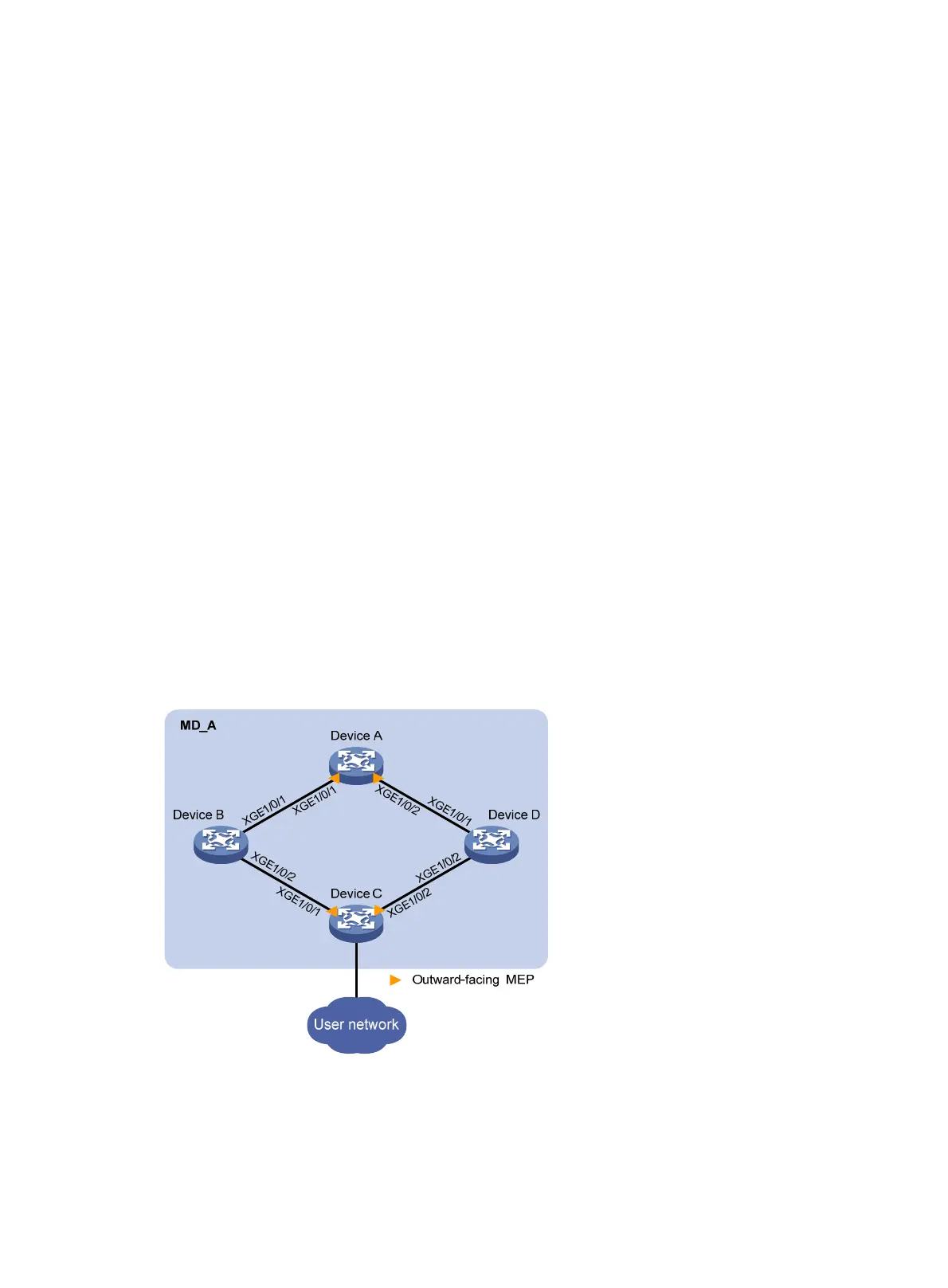56
Use the display smart-link flush command to display the flush messages received on a device.
# Display the flush messages received on Device B.
[DeviceB] display smart-link flush
Received flush packets : 5
Receiving interface of the last flush packet : Ten-GigabitEthernet1/0/2
Receiving time of the last flush packet : 16:25:21 2012/04/21
Device ID of the last flush packet : 000f-e23d-5af0
Control VLAN of the last flush packet : 10
Smart Link and Track collaboration configuration example
Network requirements
As shown in Figure 15:
• Device A, Device B, Device C, and Device D form maintenance domain (MD) MD_A of level 5.
Device C is a Smart Link device, and Device A, Device B, and Device D are associated devices.
Traffic of VLANs 1 through 200 on Device C is dually uplinked to Device A by Device B and Device
D.
• Configure the collaboration between Smart Link the CC function of CFD through track entries so that
traffic of VLANs 1 through 100 is uplinked to Device A by Device C through Ten-GigabitEthernet
1/0/1 (primary port of smart link group 1). Traffic of VLANs 101 through 200 is uplinked to Device
A by Device C through Ten-GigabitEthernet 1/0/2 (primary port of smart link group 2). When the
link between Device C and Device A fails, traffic is quickly switched to the secondary port of each
smart link group, and switched back to the primary ports after the fault is cleared.
For more information about CFD, see "Configuring CFD."
Figure 15 Network diagram
Configuration procedure
1. Configure Device A:
# Create VLAN 1 through VLAN 200.
<DeviceA> system-view

